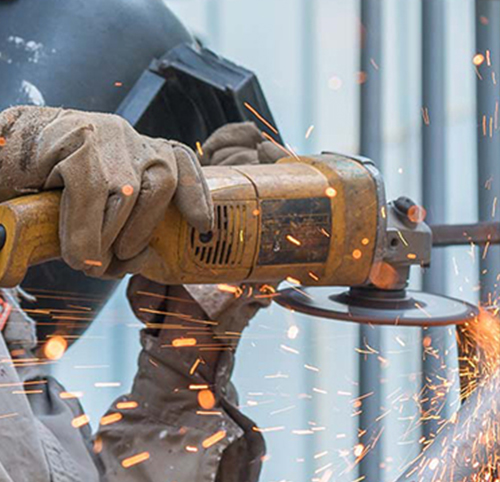ERW Pipes vs. LSAW Pipes: A Detailed Comparison

ERW Pipes vs. LSAW Pipes: A Detailed Comparison
Whether it’s for water distribution, building, or oil and gas, a pipe is a necessary product. Industries employ a wide variety of pipes, however the primary distinction between two of these widely used pipes is which is produced using a different technique and utilised for a different purpose. Understanding how these two types of pipes differ from one another will help you choose the best product for your project. The manufacturing procedures, material characteristics, applications, benefits, and drawbacks of ERW and LSAW pipes are all thoroughly compared in the paper that follows.
Production Methods
- ERW Pipes: To create these pipes, high-frequency electrical currents are applied to steel sheets’ edges, causing them to weld into one another.
- Cold Forming: Steel strips are formed into cylindrical shapes.
- Welding: The edges are welded through high-frequency induction or resistance welding.
- Sizing and Cutting: The welded pipe is then sized to the desired dimensions and cut to length.
This technique produces pipes that are seam welded, hence clean and smooth. Consistency and uniformity are therefore achieved.
- LSAW Pipes: Longitudinal Submerged Arc Welded pipes are made through bending and welding of steel plates along a longitudinal seam. These include;
- Plate Preparation- Steel plates are examined and trimmed.
- Forming- The plate is bent into the shape of a pipe by the JCOE method, which refers to the J-forming, C-forming, and O-forming.
- Welding- Both the internal and external seams utilize submerged arc welding, also known as SAW.
Inspection: Weld quality is ensured by non-destructive testing.
This process yields pipes with good strength and durability, especially for big diameters.
Material Properties
- ERW Pipes:
Wall Thickness: Uniform but not too much; hence, not suitable for very thick walls.
Diameter Range: Available in smaller diameters.
Surface Finish: Smoother and more uniform, hence less finishing.
Strength: Suitable for medium-pressure applications due to its welding process.
- LSAW Pipes:
Wall Thickness: Supports greater wall thicknesses and hence is preferred for high pressure applications.
Diameter Range: Can support large diameter size.
Surface Finish: Will be more finished since the weld happens.
Strength: Higher tensile strength and durability. ERW can be used for demanding applications like deep sea pipelines etc.
Applications
- ERW Pipes: As ERW pipes provide a uniform surface finish, they are widely used for:
- Water and gas pipeline
- Structural applications
- Fencing
- Scaffolding
- Automotive industries
- LSAW Pipes: For their strength and large diameter ranges, LSAW pipes are found to be used in various applications majorly:
- Pipeline for oil and gas
- Offshore and onshore construction
- Large distance fluid transport
- Heavy Structural applications
Advantages
- ERW Pipes:
Pricing: The production process is comparatively simple and thus has the benefit of less production cost
High Productivity: Because of the mass production benefit, delivery time is minimized.
Uniform Quality: Quality manufacturing will ensure that a uniform wall thickness and the surface will be smooth.
Light: Used in applications where weight is a factor.
- LSAW Pipes:
High Strength: Made for high-pressure and high-stress applications.
Customizable Dimensions: Accommodates thicker walls and larger diameters.
Durability: Offers great resistance to harsh environments and corrosion.
Reliability: Guarantees long-term performance in critical infrastructure projects.
Limitations
- ERW Pipes:
Thin and Narrow: Not applicable to applications requiring large diameters or thick walls.
Pressure Restrictions: Not very ideal for very high-pressure environments.
Weld Integrity: Would be less strong in welding than LSAW pipes.
- LSAW Pipes:
More Expensive
More complicated process, more expense to manufacture.
Slowest in terms of speed as opposed to ERW pipes.
The surface would be uneven as it requires further processing
Quality Standards
ERW, LSAW pipes are built in line with the set quality standards of international companies in terms of performance and reliability:
ERW Pipes: Common specifications are API 5L, ASTM A53, and EN 10219.
LSAW Pipes: Specifications comprise API 5L, ASTM A252, and ISO 3183.
These standards cover issues of dimensional tolerances, material composition, and testing.
Cost Comparison
ERW Pipes: Generally, ERW pipes tend to be less expensive; hence they find their wide usage in budget-restricted projects. The reasons for its cost-effectiveness are based on the easier manufacturing process and the reduced thickness of the material used.
LSAW Pipes are relatively costlier, but provides excellent performance in critical applications, with durability, strength and withstanding extreme conditions make it justified for the amount.
Environmental Factors
Both ERW and LSAW pipes can be produced sustainably. Using recycled steel and energy-efficient processes may minimize the environmental impact of producing these pipes. However, with higher material usage in LSAW pipes, environmental impact might be greater if not balanced with more sophisticated recycling techniques.
The choice between ERW and LSAW pipes depends upon the project. ERW pipes are inexpensive and efficient for applications requiring small to medium diameter pipes, whereas LSAW pipes offer unchallengeable strength and durability in cases of large diameter high pressure projects. Knowing how to differentiate between their manufacturing process, material properties, application, and cost can aid you in making an intelligent decision. Always weigh technical requirements against budget to settle on the best suitable type of pipe for good performance and reliability.

